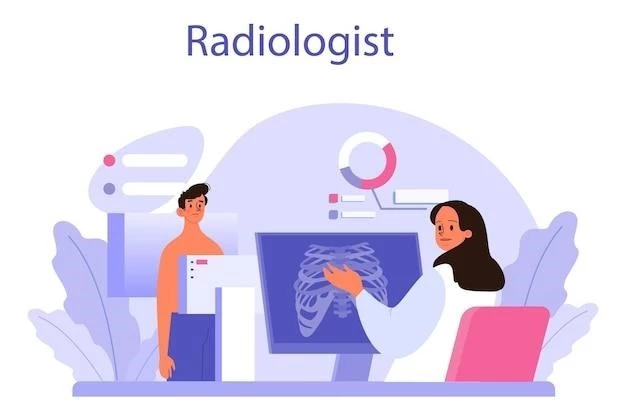Introduction
Microcephalic osteodysplastic primordial dwarfism is a rare genetic disorder characterized by severe growth abnormalities, distinct facial features, and potential medical complications.
Definition of Microcephalic Osteodysplastic Primordial Dwarfism
Microcephalic Osteodysplastic Primordial Dwarfism is a rare genetic disorder that manifests as severe growth abnormalities, distinctive facial features, and potential medical complications. It is primarily characterized by extreme short stature, microcephaly, and skeletal dysplasia, setting it apart from other forms of primordial dwarfism. This condition, particularly Type II (MOPDII), presents challenges in growth patterns and overall health, making early diagnosis and management crucial for affected individuals.

Clinical Characteristics
Microcephalic osteodysplastic primordial dwarfism type II (MOPDII) features severe growth abnormalities, distinctive facial features, short stature, microcephaly, abnormal dentition, and skeletal dysplasia.
Distinctive Features of Microcephalic Osteodysplastic Primordial Dwarfism Type II (MOPDII)
Microcephalic Osteodysplastic Primordial Dwarfism Type II (MOPDII) features extreme short stature, microcephaly, distinctive facial characteristics, skeletal dysplasia, abnormal dentition, insulin resistance, and increased risk for certain medical complications. These distinguishing features set MOPDII apart from other types of primordial dwarfism and require specialized care and management strategies.
Purpose of Review
The purpose of this review is to provide a comprehensive clinical overview of Microcephalic Osteodysplastic Primordial Dwarfism, focusing on Type II (MOPDII), including recent advancements in understanding this rare genetic disorder.
Overview and Comprehensive Clinical Review of Microcephalic Osteodysplastic Primordial Dwarfism
Microcephalic Osteodysplastic Primordial Dwarfism (MOPD) encompasses a group of rare genetic disorders characterized by severe growth abnormalities, microcephaly, distinctive facial features, and skeletal dysplasia. This review aims to provide a detailed clinical overview of Microcephalic Osteodysplastic Primordial Dwarfism Type II (MOPDII), emphasizing the diagnostic challenges, associated medical complications, and management strategies essential for optimizing patient care.
Background
Microcephalic osteodysplastic primordial dwarfism type II (MOPDII) is the most common form of primordial dwarfism, characterized by bialleic mutations in the pericentrin gene (PCNT). This condition presents various associated medical complications, including a documented risk of neurovascular disease, emphasizing the need for thorough management and care strategies.
Causes and Genetic Mutations of Microcephalic Osteodysplastic Primordial Dwarfism Type II
Microcephalic Osteodysplastic Primordial Dwarfism Type II (MOPDII) is primarily caused by biallelic mutations in the pericentrin gene (PCNT). These genetic abnormalities contribute to the characteristic features of MOPDII, including severe growth abnormalities, microcephaly, skeletal dysplasia, and potential associated medical complications. Understanding the genetic basis of this condition is crucial for diagnosis, management, and ongoing research efforts.
Individuals with microcephalic osteodysplastic primordial dwarfism may experience associated medical complications such as abnormal dentition, skeletal dysplasia, risk of neurovascular disease, and insulin resistance.
Associated Medical Complications
Risk factors and complications in individuals with microcephalic osteodysplastic primordial dwarfism include abnormal dentition, skeletal dysplasia, neurovascular disease risk, insulin resistance, and potential developmental challenges. Thorough management is crucial for addressing these complexities.
Growth Abnormalities
Growth abnormalities in microcephalic osteodysplastic primordial dwarfism are evident prenatally and postnatally, leading to severe short stature, microcephaly, skeletal dysplasia, and potential developmental challenges.
Understanding Growth Patterns in Microcephalic Osteodysplastic Primordial Dwarfism
Microcephalic Osteodysplastic Primordial Dwarfism (MOPD) Type II presents with severe growth abnormalities, notably pre- and postnatal growth retardation. The condition is further characterized by marked microcephaly disproportionate to body size, skeletal dysplasia, abnormal dentition, insulin resistance, and an increased risk for certain associated medical complications. These growth patterns in MOPDII emphasize the need for specialized care and management to address the challenges faced by affected individuals properly.
Diagnosis and Treatment
Diagnosing microcephalic osteodysplastic primordial dwarfism involves genetic testing, imaging studies, and clinical evaluation. Treatment focuses on managing associated complications, providing growth hormone therapy, addressing skeletal abnormalities, and supporting overall health and development.
Diagnostic Approaches and Management Strategies for Microcephalic Osteodysplastic Primordial Dwarfism
Diagnosing Microcephalic Osteodysplastic Primordial Dwarfism involves genetic testing to identify mutations in the pericentrin gene (PCNT). Management strategies include growth hormone therapy, orthopedic interventions for skeletal abnormalities, dental care for abnormal dentition, and proactive monitoring for associated medical complications.
Prognosis and Life Expectancy
The prognosis for individuals with microcephalic osteodysplastic primordial dwarfism is typically guarded due to associated medical complications. Life expectancy may be reduced, and ongoing specialized care is vital to address the challenges faced by affected individuals.
Impact of Microcephalic Osteodysplastic Primordial Dwarfism on Life Span
Microcephalic Osteodysplastic Primordial Dwarfism, especially Type II (MOPDII), can significantly impact life span due to associated medical complications and growth abnormalities. While individual outcomes may vary, affected individuals may face challenges that reduce life expectancy, necessitating specialized care and ongoing medical attention to optimize quality of life.

Research and Recent Findings
Advancements in understanding microcephalic osteodysplastic primordial dwarfism have focused on genetic testing, growth abnormalities, associated medical complications, and specialized management strategies. Current research aims to improve diagnostic approaches, treatment outcomes, and overall quality of life for affected individuals.
Advancements in Understanding Microcephalic Osteodysplastic Primordial Dwarfism
Recent advancements in understanding Microcephalic Osteodysplastic Primordial Dwarfism have focused on genetic testing to identify mutations in the pericentrin gene (PCNT), investigating growth abnormalities, managing associated complications, and developing specialized care strategies. Ongoing research aims to enhance diagnostic accuracy, improve treatment outcomes, and enhance the overall quality of life for individuals affected by this rare genetic disorder.
Conclusion
In conclusion, Microcephalic Osteodysplastic Primordial Dwarfism presents unique challenges requiring specialized care to address growth abnormalities and associated complications, emphasizing the importance of ongoing research and advancements in diagnosis and management.
Summary of Key Points Regarding Microcephalic Osteodysplastic Primordial Dwarfism Type II
Microcephalic Osteodysplastic Primordial Dwarfism Type II (MOPDII) is characterized by severe growth abnormalities, microcephaly, distinctive facial features, skeletal dysplasia, abnormal dentition, insulin resistance, and an increased risk of associated medical complications. Management strategies include growth hormone therapy, orthopedic interventions, dental care, and proactive monitoring to optimize care and quality of life for affected individuals.
